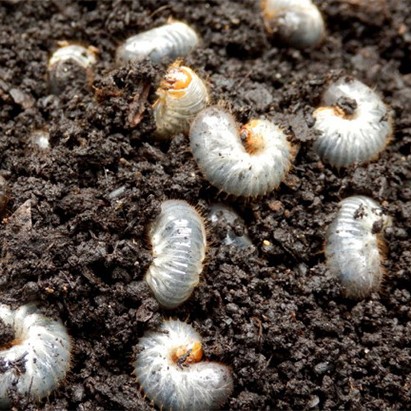If you are experiencing brown patches in the residential lawn, areas that never turned green once spring arrived, white grubs might be the culprit! To verify if it is grub damage, the affected area of turf will pull back like a roll of carpet and will have little to no root system. Newly affected turfgrass will appear as oddly shaped dead areas, whether irrigated or not, in late summer or early fall. An indicator that you may have a grub problem is that your turf has become spongy. Often one can notice this phenomenon before widespread brown patches appear. In a well-irrigated turf, sponginess may be the first indication that there is a grub problem.
It is best to treat the immature grubs because the insect is most susceptible to pesticides while young. This requires applying necessary chemicals while newly hatched grubs are feeding on the turf root systems, which is mid-late summer.
Upon inspection of the soil in your residential lawn, it is important to understand that some grubs are okay. Examine your turf to verify that white grubs are, indeed, present and establish the degree of the grub numbers. A healthy residential lawn can effortlessly sustain a population of zero to five white grubs —and potentially numbers as high as nine per square foot. While inspecting and the turf grass is elevated, pluck any of the white creatures that you can and drop them in to a bucket of warm, soapy water. Always be sure to water the turf grass after replacing it so that it can root. To inquire further about how All American combats white grubs in the residential lawn, call the office at 402-408-0000.


